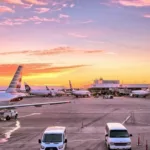There’s nothing worse than spending your time – and not to mention, money – planning the perfect trip for your family, only to get caught out by unexpected surprises which ruin your vacation.
Ski trips, in particular, are notorious for this, on account of all the different variables that need to be considered to make your trip a success.
Unlike beach holidays, where you can simply book your flights and hotel and jet off, ski trips are a little more complicated. You need to think about the weather, ski passes and equipment rental costs, transport to and from the airport, and so much more.
With that in mind, we’ve put together this list of 3 handy tips for making sure all goes according to plan!
1. Don’t Book Flights Until You’re Sure About the Dates
A surefire way to ruin a ski trip is to get to the resort, only to find out that it’s closed. More vacationers have been caught out by this than you might think – it’s surprisingly common. The problem with ski trips is that they’re highly dependent on the weather. Ski resorts determine their opening and closing dates based on snow levels, so they don’t always know the exact opening and closing date far in advance.
It’s possible to get estimates of expected opening and closing dates based on weather forecasts over long periods, but long-term weather forecasts are notoriously unreliable, so your best bet is to book for only that dates that you’re absolutely certain the resort will be open on.
2. Research, Research, Research!
Before you get your heart set on a resort, make sure it’s suitable for what you’re looking for and your skill level. For example, if you’re interested in visiting Whistler – North America’s largest ski resort, you’ll find it has varied terrain which is suitable from complete beginners right the way up to advanced, professional athletes. Other resorts, however, might not be suitable for such a broad range of skill levels.
You might also want to check out snow cams and weather reports for your resort to make sure the snow level is what you expect, as well as the prices of ski resort lifts, tickets, and equipment rentals so that you don’t run into any unexpected costs.
3. Check Your Airline’s Baggage Airline’s
Whilst we’re on the topic of unexpected costs, it’s worth mentioning that different airlines have different baggage policies regarding skis and snowboards. Therefore, if you’re taking your equipment with you, you’ll want to make sure you understand any fees you make have to pay to transport your skis or snowboards on the flight.
The fees usually depend on the height and weight of your baggage, so grab a set of scales and a tape measure and make sure your baggage falls within the allowed parameters, or that you’re aware of how much extra you’ll have to pay. You can usually find out the baggage policy in advance on the website of your chosen airline, or you can compare multiple airlines before you book to get the best rate after accounting for baggage costs.








